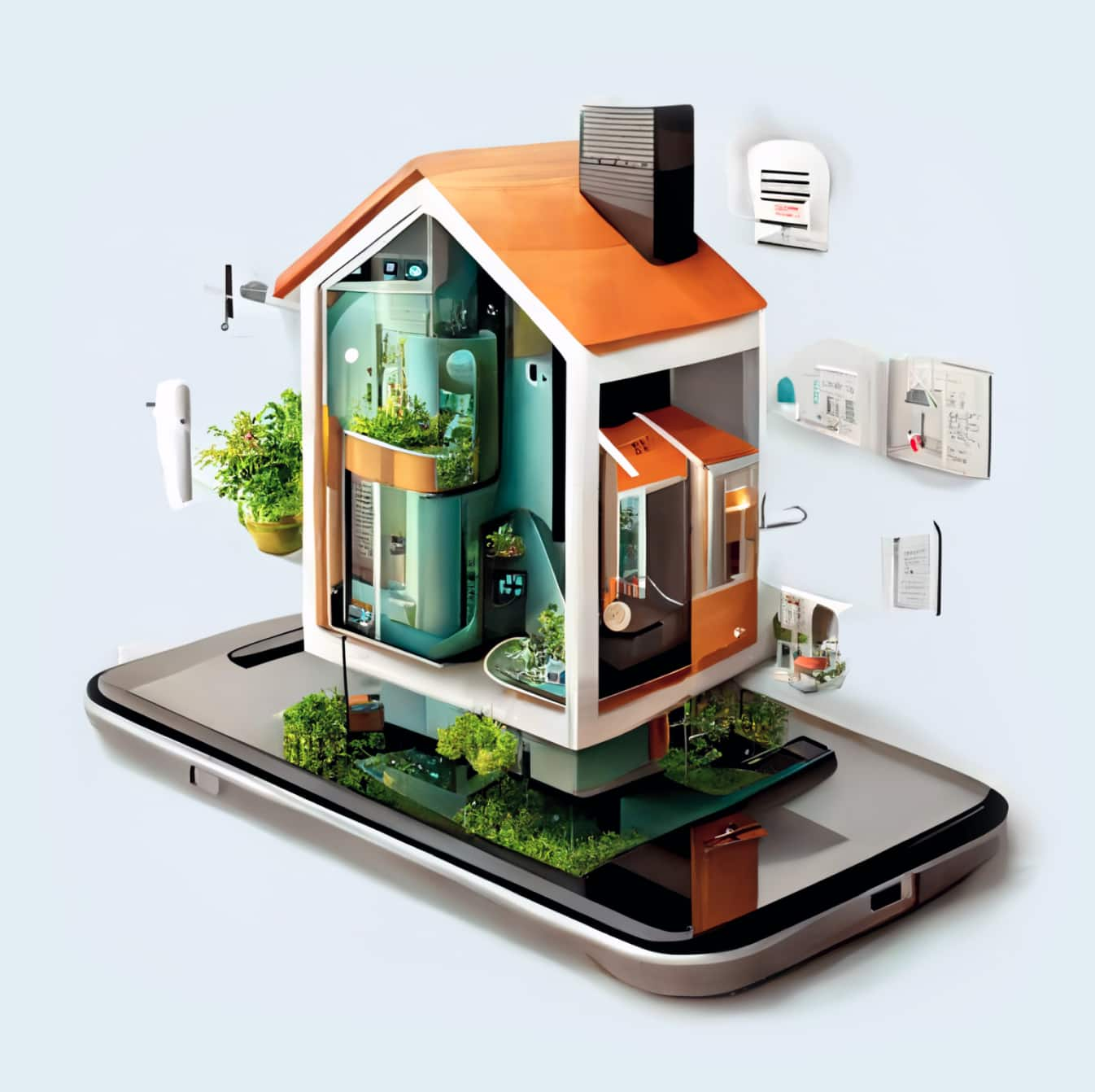The Role of Software in Developing Smart Homes
In Official BlogIntroduction:
In the volatile field of technology, smart home solutions have emerged as a new paradigm that has changed how we interact with our rooms. At the core of this transformation lies advanced software that controls not only smart devices but harmoniously conducts a smooth melody of connectivity and automation. In this tech blog, we will discuss the deep influence that software has on refining smart home technology and investigate its progression, problems arising during it as well future outlooks for this sphere.
The Foundation of Smart Homes:
Connectivity and Integration Strong software frameworks that enable connectivity lay at the heart of any smart home ecosystem. From thermostats and lighting systems to security cameras, sensors and voice-controlled assistants smart home devices depend on advanced software protocols developed for seamless communication. Integration is the key that enables users to manage and observe different devices in a unified dashboard, promoting an integrated living environment.
Intelligent Automation:
3 Smart Home Hubs and Their Roles Sophisticated software-powered smart home hubs play an essential role in orchestrating the intelligent automation. These hubs serve as the brain center, interconnecting and overseeing various devices so that operations can be simplified. Smart home hubs use intuitive interfaces and machine learning algorithms to learn user preferences, adapt to routines , automate processes offering a new level of convenience in energy efficiency.
Voice-Activated Assistants and Natural Language Processing devices :
The incorporation of voice-activated aids, including Amazon’s Alexa , Google Assistant and Apple ‘ s Siri illustrates the outstanding advances in natural language processing (NLP) inside smart home technology. These assistants are able to understand and respond with the help of advanced software algorithms, offering a hands-free and intuitive interface for controlling smart devices, timing weather updates or even ordering groceries.
Enhanced Security Measures:
Software and Smart Home Safety Homeowners are very careful about their safety, and smart home technology uses software to implement high-tech solutions. Modern advantages of software driven security features range from intelligent doorbell cameras with facial recognition to smart locks with remote access, giving users the power to observe and fortify their homes in real-time. The applications of machine learning algorithms help to improve threat detection, minimizing the false alarms made and offer a sense of overall safety within smart homes.
The intelligent algorithms and data analytics of smart home software play an important role in energy conservation. Software-controlled energy efficient devices optimize the usage of power according to patterns and other external conditions. For example, smart thermostats learn user preferences; that is they adapt to weather changes regulate heating or cooling systems so as not only reducing energy consumption but also saving money and being useful in environmental matter.
Challenges and Solutions:
Interoperability and Standardization As the smart home ecosystem keeps growing the problem is connectivity of devices from different manufacturers. The industry is actively tackling this challenge, with initiatives such as the Connectivity Standards Alliance (CSA), formerly known as ZigBee Alliance which works to promote open standards making devices compatible and interoperable.
Privacy Concerns and Data Security:
With the advent of increasingly connected devices in intelligent homes, issues about privacy and data security have become all important. The smart home software needs to implement strong encryption, secure data transmission and user authentication to protect sensitive information. Concerns about unauthorized access and potential data breaches have led developers to focus increasingly on the creation of transparent privacy policies as well as an emphasis on control by users over their own information.
Overcoming Fragmentation:
The Role of Platforms Smart home platforms function like integrators in the rapidly dividing market. Platforms like Apple HomeKit, Google home or Samsung SmartThings So, software in these platforms fulfills a role of unifying the user experience so that devices from different manufacturers come together and link to create one single cohesive standardized interface which is intuitive for end users.
Artificial Intelligence and Predictive Analytics:
The incorporation of artificial intelligence AI into smart home software has reconstructed the manner in which homes function. AI-powered algorithms study the behavior of users, predict preferences and adjust to changeable situations. Predictive analytics allow smart homes to respond proactively from the user’s requirements, such as adjustment of lighting depending on daily routines or advice regarding energy-efficient moves.
The Future of Smart Home Software:
Edge Computing Given the anticipated sophistication of smart home ecosystems, edge computing integration stands to be a game-changer. Edge computing refers to the processing of data closer to the source (i.e., within intelligent devices themselves or at least on the edge of networks) as opposed from completely relying upon solutions based in clouds. This transition shortens latency, accelerates real-time processing and amplifies privacy by maintaining sensitive data nearer to home.
5G and Smart Home Connectivity.
5G technology will also enhance connectivity in smart homes. 5G will enable smooth communication between smart devices due to faster data speeds, reduced latency and higher device capacity. 5G networks will drive smart home software to develop more interactive and reliable experiences, opening new opportunities for immersive applications of the smart home.
Customization and User Experience:
User experience plays a significant role in smart home technology, and the software functions to ensure easy-to -use as well as personalized interface. Intuitive design and user-oriented interfaces are key factors that improve the smart home experience.
The Role of Developers: Innovating for Smart Home Software The market:
Off-camera, developers are the builders creating the future of smart home software. Their creativity and skills in technology drive innovation by bringing new features, improving security measures, or dealing with interoperation issues.
Conclusion:
In summary, the role of software in advancing smart home technology is significant and ongoing. Smart home software is playing a crucial role in the creation of intelligent, user-focused living spaces from connectivity and automation to security and energy efficiency. From challenges and innovation in the journey, with an infinite user-friendly smart home experience waits for users all over the globe. Watch this space as software dictates the smart homes of future, bringing with it an era unparalleled in convenience efficiency and technological advancement.
The nature of software in advancing smart homes is revolutionary, moving home living into a new age unknown before for convenience, efficiency and connection. Software is the core of smart home technology evolution and thus its progress ensures a forward movement in all aspects.
Fundamentally, the ability of different devices to communicate effortlessly is a result of software prowess used in building smart homes. Well-crafted software solutions provide the ability to integrate various devices, streamline operations and offer users a unified interface – evidence of their strength.
Software moves beyond the borders of typical user interfaces making connected homes more intuitive with, for instance, voice-activated assistants learning to understand their owners’ commands and natural language processing within smart home hubs. On top of interconnection, the sophisticated algorithms that power these systems learn and adapt to user preferences; hence making smart homes not just being integrated but intelligently responsive to their inhabitants’ needs and habits.
Software-driven features focus on security as a key concern for homeowners. Facial recognition, remote access and machine learning algorithms add to the strength of smart home security systems by enabling users to monitor their homes in real-time with relative ease.
Another essential element is optimization of energy efficiency thanks to the software-controlled devices. For example, smart thermostats use data analytics and machine learning to automate energy management according to usage patterns and external factors thus promoting savings in terms of costs while at the same time enhancing sustainability of Mother Nature.
Issues surrounding interoperability, privacy concerns and data security are some of the challenges that face smart home software therefore it is always important for there to be innovation in these applications. Measures critical for overcoming these challenges and ensuring the trust of users including open standards, transparent privacy policies as well as a strong encryption should be promoted.
Looking forward, the future of smart home software seems even more promising. The incorporation of artificial intelligence, predictive analytics and the advent of 5G technology marks a new horizon. Edge computing that moves processing power closer to devices could improve real-time performance and privacy, redefining the smart home environment.
As the main movers of innovation, developers are an important factor that shapes what smart home technology could become in future. The capacity to approach challenges, introduce innovative features and facilitating collaboration in smart home industry is vital for making the ecosystem vibrant and dynamic.
The development of smart homes is inevitably connected to the evolution of software. The fact that today’s smart homes are interconnected, intelligent and responsive attests to the genius of software developers. As technology keeps improving, software will play a significant role in the creation of smart homes which could bring an exciting future as we would have not just smart but adaptive and secure houses that respond based on our individual needs. The smart home journey is toward the ultimate experience and that will continue as software continues to unlock infinite possibilities.





